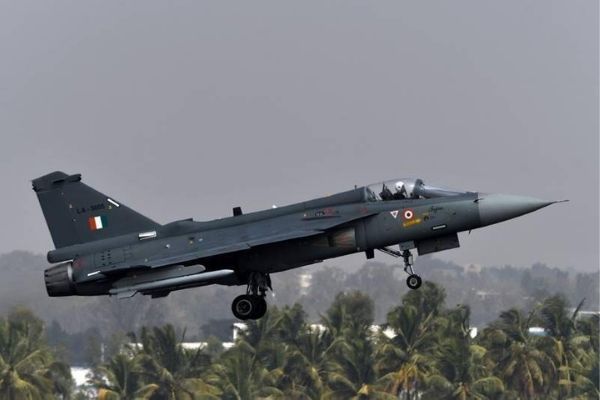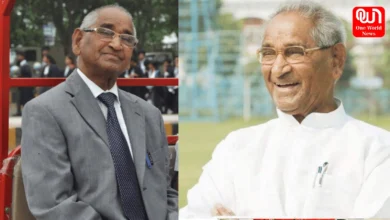
How India is becoming self-reliant in the defence sector
India’s defence-related export between March 2020 to December 2020 stood at $780 million (56,77,48,74,000 in INR).
India has been one of the biggest defence importers in the world, but in the last few years, the country has tried to achieve self-reliance in defence production. The government of India has planned to spend $130 billion (94,62,47,90,00,000 INR) on military modernization in the next 5 years. The government has opened up the defence sector for private sector participation to push indigenous manufacturing.
The opening up of the defence sector also paves way for foreign original equipment manufacturers to establish a strategic partnership with Indian companies. Annual turnover by the private sector in Aerospace and defence sector in 2018 stood at $2.4 billion (1,74,69,19,20,000 INR).
As per Invest India, a defence strategy has bee formulated with a view of facilitating DPSUs (Defence Public Sector Enterprises) and private defence players in exporting business opportunities. The total value production for DPSUS and OFB together accounts for $8.0 billion (5,82,30,64,00,000 INR).
The central government has formulated policies to boost defence exports and achieve a target of $5 billion in defence export in the next 5 years. The Indian government has allowed 100 per cent FDI in the defence sector, where 74 per cent is allowed under automatic route and beyond 74 per cent by government route.
India spends around 2.3 per cent of its GDP on defence and has a share of around 15 per cent in global arms import. India’s defence-related export between March 2020 to December 2020 stood at $780 million (56,77,48,74,000 in INR).

Budget for 2021-22 paves way for more private investment in the defence sector
The total defence budget for the upcoming fiscal year is $ 49.6 billion (362,345.60 crores in INR), excluding defence pensions. The budget has increased by 0.7 per cent compared to Revised Estimates and 7.34 per cent in comparison to the Budgeted Estimate of 2020-21. Budgetary allocation towards revenue and capital expenditure stood at $29.02 billion (21,027.56 crore in INR) and $18.48 billion (135,060.72 crore in INR) respectively.
The budget increased 19 per cent in the capital outlay for defence expenditure, the highest ever increase in capital outlay since 2006, reiterating its focus on defence modernization.
Under the Disinvestment Policy of the government, defence has been characterized as one of the strategic sectors under the Disinvestment Policy of Government of India to minimize the presence of CPSEs (Central Public Sector Enterprises) and create further investment opportunities for private companies in the defence sector.
The aim of self-reliance in defence is reflected through the reduction in custom duty rates for parts and components for the manufacture of aircrafts by PSUs of Ministry of Defence.
Defence manufacturing
India’s focus on indigenous manufacturing in the defence sector has paid off well as we have been introduced to many new indigenously manufactured defence products. We have seen manufacturers like HAL (Hindustan Aeronautics Limited) manufacturing Tejas Light Combat Aircraft, a Portable Telemedicine System (PDF) for Armed Forces, the composites Sonar dome, a heavyweight torpedo called Varunastra manufactured with 95 per cent locally sourced parts, medium range surface to air missiles (MSRAM), Thermobaric (TB) ammunition specifically designed for Arjun tanks, and Penetration-cum-Blast (PCB).
Millennium Aero Dynamics and Cochin Shipyard indigenously produced and developed the INS Vikrant. They are currently working on INS Vishal, which is presently in the design stage.
Dhruv multirole helicopter, Rudra armed helicopter and Light Combat Helicopter are developed by HAL in cooperation with Taneja Aerospace and Aviation Limited (TAAL) indigenously within India.
India, so far, lacks the advanced-technological capability to create its own defence drones. However, the DRDO (Defence Research and Development Organization) does have plans to develop and produce air-launched drones with the help of the Air Force Research Laboratory in the United States. DRDO is also working on Nishant unmanned aerial vehicle.
Recent development
Rajnath Singh, Union Defence Minister, recently inaugurated HAL’s Second Light Combat Aircraft (LCA)-Tejas production line in Bengaluru. A deal is to be signed with the HAL in the next few days, which would strengthen the IAF’s overall combat capability along with fleet of homegrown fighter jet ‘LCA-Tejas’.
The Cabinet Committee on Security (CCS), chaired by PM Narendra Modi had approved the largest indigenous defence procurement deal in the last month of Rs 48,000 crores to buy 83 LCA Tejas Mark1A fighter jets. Defence Minister called the deal “This is the biggest procurement in terms of indigenous defence procurement, which will give new heights to the Indian aerospace sector.” Rajnath Singh has also hinted that several countries have expressed interest in procuring Tejas M1A.
Have a news story, an interesting write-up or simply a suggestion? Write to us at info@oneworldnews.com








